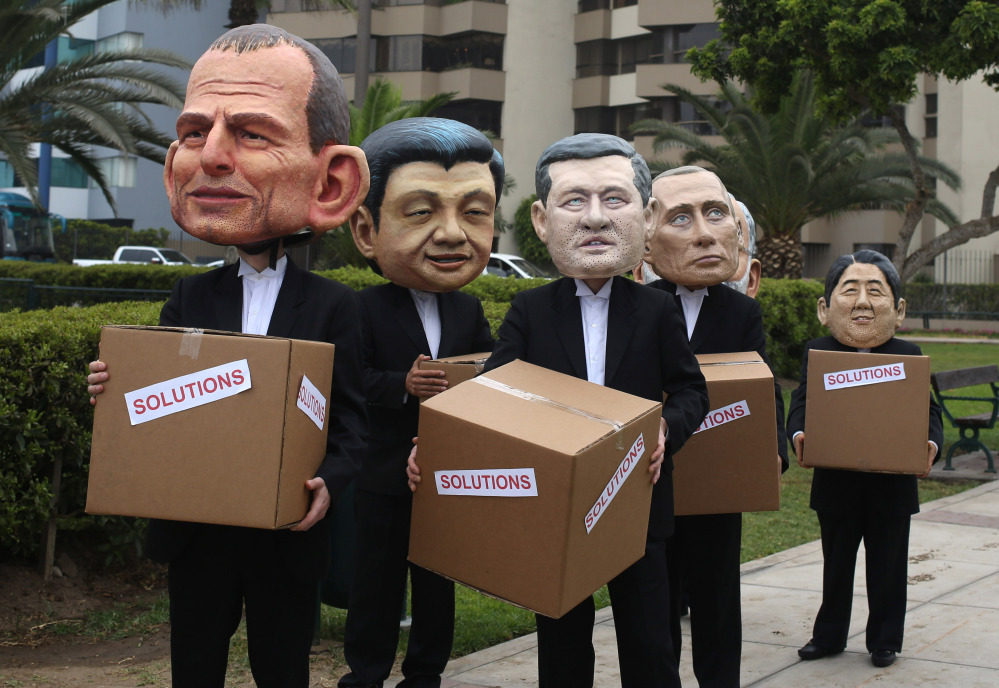LIMA, Peru — The increasingly hostile climate predicted by scientists – rising seas, crippling droughts, ever-stronger super storms – is the looming nightmare that drives a contingent of young environmental activists that has been seeking to make a mark on U.N. climate talks.
The largely 20-somethings agitating for urgent collective action to curb global warming account for a few hundred at best of the 12,500 people accredited to attend the Lima negotiations.
They include activists, journalists for green news media and UN workers and they are passionate about swaying government negotiators. It is their generation, after all, that will bear the burden of a runaway climate.
The Lima talks are supposed to lay the groundwork for a global climate pact in Paris next year. But they have disappointed most young activists, who want faster progress.
Jim Shultz, 57, a lifelong political activist who runs the left-leaning Democracy Center nonprofit from Bolivia, compared the impact of climate change on the young to that of the Vietnam war on an earlier generation.
“You and I are going to be in the ground when the science fiction stuff starts happening,” said Shultz, a Californian. “They are going to be raising their kids.”
A glance at some of the young voices:
• Maria Escalante is broad-shouldered, ruddy-cheeked and prone to direct action.
“It is our lives they’re playing with,” the 23-year-old Colombian says of the negotiators.
She was expelled from last year’s climate talks in Poland for holding high a banner that read “How Many More Lives?” in a conference hall. It was a reference to Typhoon Haiyan, that was in the midst of claiming more than 10,000 lives in the Philippines. Some say there’s a good chance climate change was a factor.
After her Warsaw stunt, it took a letter from the Group of 77 developing nations to get Escalante credentials for the Lima talks. She had to sign a code of conduct that sharply restricts where she can stage protests.
Escalante, who belongs to the youth group “Earth in Brackets,” stands apart from the smartly dressed delegates with her white T-shirt, jeans and nose ring.
She believes it is important to attend the talks to understand the process and explain it to others, but feels excluded: “We don’t have enough space to make a difference.”
• Hamish McKenzie grew up during the greatest drought in recorded Australian history.
“We say of young Australians today that we don’t know what green grass looks like because everything is just yellow and prickly and everyone gets sore feet when you run on it,” says the 23-year-old Melbourne native.
The human costs were high: bush fire deaths, a spike in farmer suicides, costly desalination plants.
“We used to shower with buckets underneath our feet to save water,” he said
McKenzie says he’s pained that so many of his countrymen won’t connect the dots between the extreme weather and greenhouse gas emissions.
He was among hundreds of thousands who took to the streets to protest parliament’s July vote that made Australia the first developed nation to repeal a tax on carbon emissions, the main source of man-made warming. Heavily reliant on coal, Australia is among the world’s largest per-capita carbon polluters.
Send questions/comments to the editors.



Success. Please wait for the page to reload. If the page does not reload within 5 seconds, please refresh the page.
Enter your email and password to access comments.
Hi, to comment on stories you must . This profile is in addition to your subscription and website login.
Already have a commenting profile? .
Invalid username/password.
Please check your email to confirm and complete your registration.
Only subscribers are eligible to post comments. Please subscribe or login first for digital access. Here’s why.
Use the form below to reset your password. When you've submitted your account email, we will send an email with a reset code.